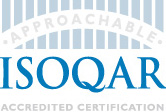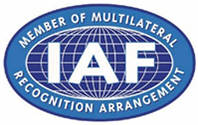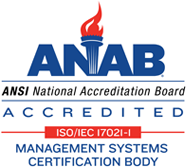
ISO 27001 - Information Security
ISO 27001 is a specification for the management of Information Security. It is applicable to all sectors of industry and commerce and not confined to information held on computers. It addresses the security of information in whatever form it is held.
The information may be printed or written on paper, stored electronically, transmitted by post or email, shown on films, or spoken in conversation. Whatever form the information takes, or means by which it is shared or stored, ISO 27001 helps an organization ensure it is always appropriately protected.
ISO 27001 contains a number of control objectives and controls. These include:
- Information security policies
- Organization of information security
- Human resource security
- Asset management
- Access control
- Cryptography
- Physical and environmental security
- Operations security
- Communications security
- System acquisition, development and maintenance
- Supplier relationships
- Information security incident management
- Information security aspects of business continuity management
- Compliance with legal and contractual requirements
Why is Information Security needed?
Information is now globally accepted as being a vital asset for most organizations and businesses. As such, the confidentiality, integrity, and availability of vital corporate and customer information may be essential to maintain competitive edge, cash-flow, profitability, legal compliance and commercial image. ISO 27001 is intended to assist with this task. It is easy to imagine the consequences for an organization if its information was lost, destroyed, corrupted, burnt, flooded, sabotaged, or misused. In many cases it can (and has) led to the collapse of companies.
How do you start to implement ISO 27001? What is involved?
Developing an Information Security Management System (ISMS) that satisfies the requirements of ISO 27001 involves three steps:
1. Creation of a management framework for information
This sets the direction, aims, and objectives of information security and defines a policy which has management commitment.
2. Identification and assessment of security risks
Security requirements are identified by a methodical assessment of security risks. The results of this assessment will help guide and determine the appropriate management action and priorities for managing information security risks.
3. Selection and implementation of controls
Once security requirements have been identified, controls should be selected and implemented. The controls need to ensure that risks are reduced to an acceptable level and meet an organization’s specific security objectives. Controls can be in the form of policies, practices, procedures, organizational structures and software functions. They will vary from organization to organization. Expenditure on controls needs to be balanced against the business harm likely to result from security failures.
One section of the actual standard provides guidance on its use.
Adopting ISO 27001 cannot make your organization immune from security breaches. But, it will make them less likely and reduce the consequential cost and disruption if they do occur.
Being Audited to ISO 27001
Once all the requirements of ISO 27001 have been met, you can apply for an external audit. This should be carried out by a third party, accredited certification body, such as ISOQAR.
ISOQAR will firstly review relevant documentation. This should include the declared policy, scope of the ISMS, documents covering the risk assessment, risk treatment plan, Statement of Applicability and documented security procedures. The auditor(s) will also be checking that you have identified and implemented the controls that are appropriate to your size and type of business. This process is normally carried out at your premises, being more beneficial to both parties.
This is followed at a later date by a full on-site audit to ensure that working practices observe these procedures and stated objectives, and that appropriate records are kept.
After a successful audit, a certificate of registration to ISO 27001 will be issued. There will then be surveillance visits (usually once or twice a year) to ensure that the system continues to work.
What are the Benefits of Certification to ISO 27001
Obtaining a certificate from a third party certification body such as ISOQAR demonstrates that you have addressed, implemented and controlled the security of your information. But the benefits don’t stop there. Certification also:
- Comforts customers, employees, trading partners and stakeholders – in the knowledge that your management information and systems are more secure.
- Demonstrates credibility and trust.
- Can lead to cost savings. Even a single information security breach can involve significant costs.
- Establishes that relevant laws and regulations are being met.
- Ensures that a commitment to Information Security exists at all levels throughout an organization.
Why choose ISOQAR for your Certification Audit?
ISOQAR has an enviable record for customer satisfaction for its certification services. A friendly, practical and straightforward approach has led to continual steady growth through referrals from contented clients and management consultants. ISOQAR only employs auditors that have empathy with this approach. They are also carefully allocated by their experience in the industry they are auditing. This results in a practical, meaningful audit, carried out in an air of mutual understanding. ISOQAR firmly believes that its audits should ‘add value’ and benefit the organization being audited.
What is the cost of ISO 27001 Certification?
The controls each organization needs to put in place to ensure the security of its information vary widely. Consequently we ask companies seeking registration to complete a short questionnaire about its activities and selected security controls. This information enables us to ascertain how long the audit will take and provide an accurate written quotation (without any obligation). ISOQAR’s fees are amongst the lowest you will find for such certification services.
Integrated Management Systems
There are several common elements between the ISO 9001 and ISO 27001, such as management review, document control, corrective action and the requirement for trained personnel. These can be combined into a single, joint system (together with Health & Safety if desired). Assessment of joint systems is available and may be the most suitable and cost effective approach for some companies.


